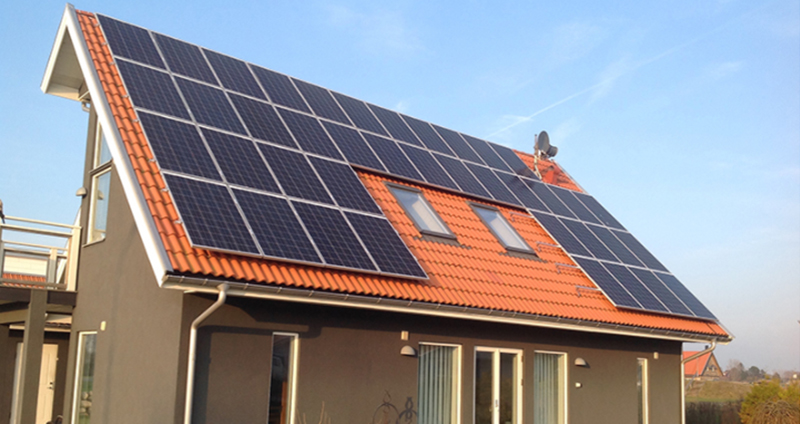To promote renewable technology for electricity production, investment support for solar cells was introduced in 2009. The support has been in great demand and the budget has been increased several times over the years. In 2021, solar cell support will be replaced by the Tax Reduction for green technology.
The solar cell support gave the right to a percentage compensation of the total system cost, which meant that the magnitude of the various costs for a solar cell installation on a villa did not play a role in the level of support. The new green deduction only provides compensation for part of the costs.
Amelia Oller Westerberg at Bequerel Sweden therefore saw value in examining how the costs of a typical installation of solar cells on a residential roof are distributed.
– More than half of all grid-connected PV systems in Sweden at the end of 2019 were so-called villa systems. These are installed for self-consumption and are subject to several market-based support systems.
This study presents an updated supplier cost structure based on data from actual systems installed in 2020 combined with information gathered in interviews with participating system suppliers.
This year is the last year that private individuals can use the Swedish direct capital subsidy programme. The support system will be replaced by a tax reduction for green technology (“Skattereduktion för installation av grön teknik”). In the direct capital subsidy programme, a fixed percentage of the total system costs are covered, which meant that the size and distribution of the underlying cost posts did not matter. The green tax reduction, on the other hand, does not provide support for all costs associated with a villa system, but only labor and hardware costs. Knowledge of the cost distribution is therefore becoming more important.
Due to the introduction of the Tax reduction for green technology on January 1st 2021, the costs are categorized into hardware costs, labor costs and other costs. These are in turn divided into module costs, inverter costs, costs for other electronics, costs for mounting materials, installation costs, costs for permits, travel time costs, design and sales costs, costs of shipping to the customer, travel costs and other costs.
The results show that the single largest cost for all suppliers was that for installation work. In the category of hardware costs, module costs are the most extensive. In a supplier cost structure for costs per kWp, hardware costs make up 60.5%, labor costs 32.9 % and other costs 6.6%. In actual costs, this corresponds to 7 082, 3 849 and 770 SEK/kWp, respectively. A standardized supplier cost structure for a 10 kWp system is also presented, where the total cost amounts to 109 840 SEK.
- As the housing market is expanding rapidly and prices are gradually falling, there is great interest in a contemporary and overall picture of costs, says Amelia Oller Westerberg. I hope that the data we have developed in the project can facilitate the transition between the various support systems and contribute to a better state of knowledge about the Swedish housing market.
